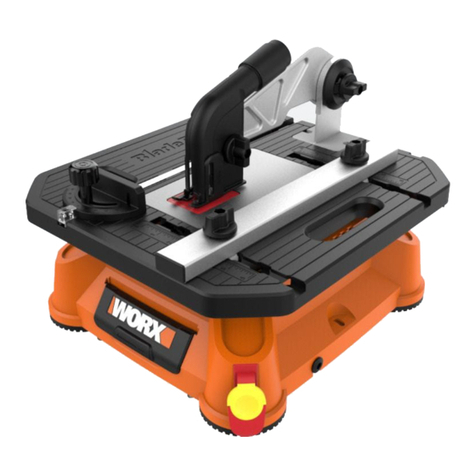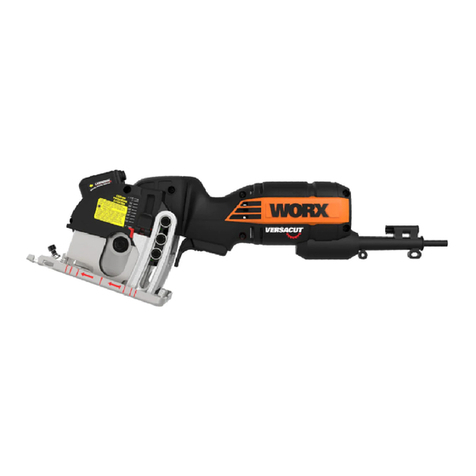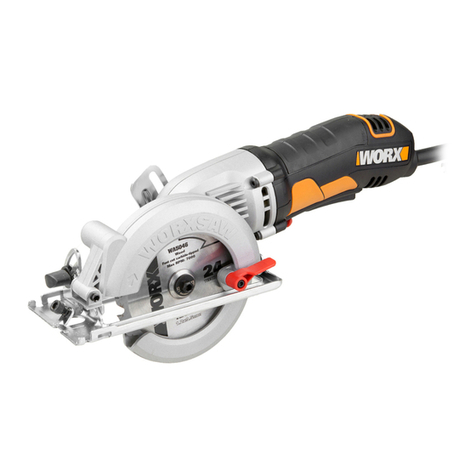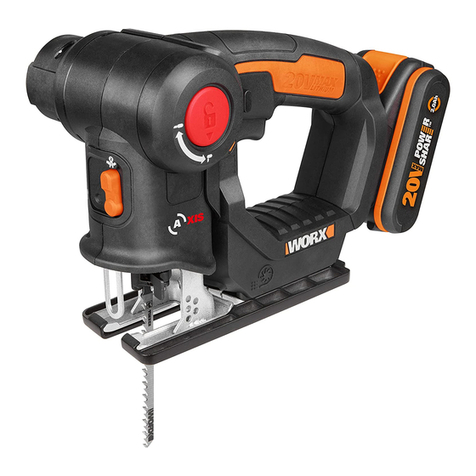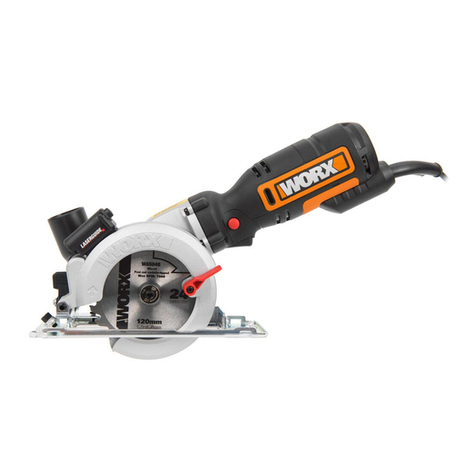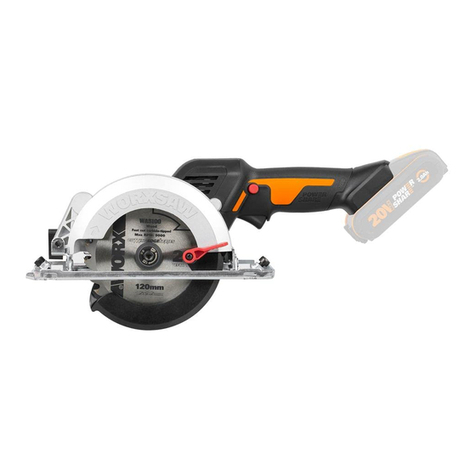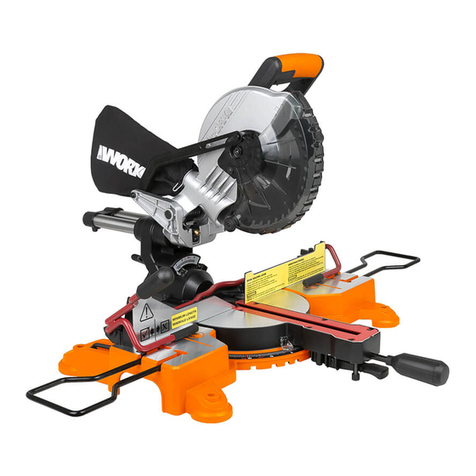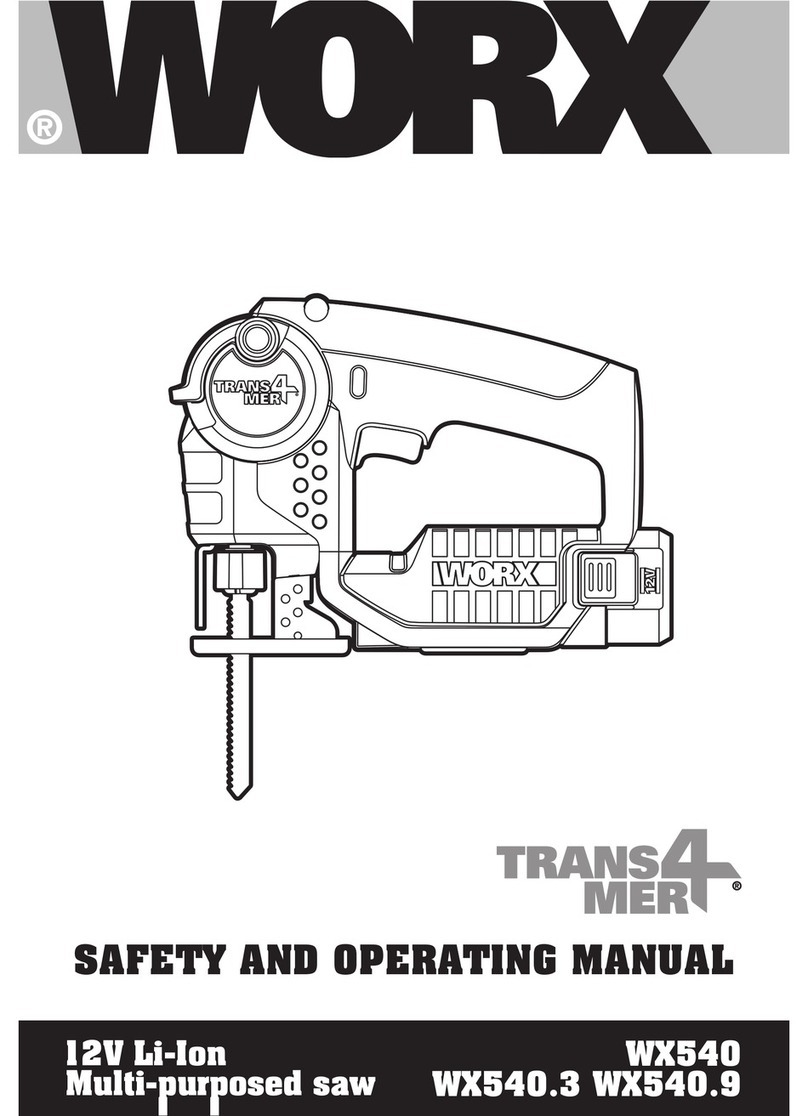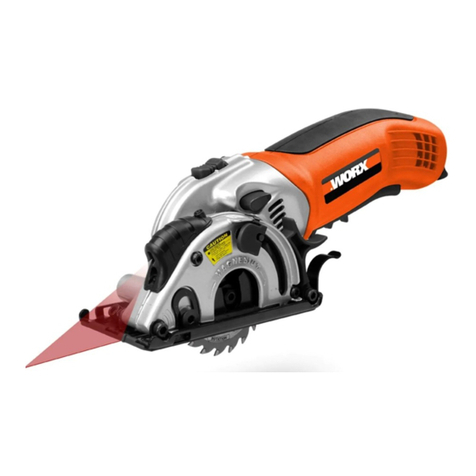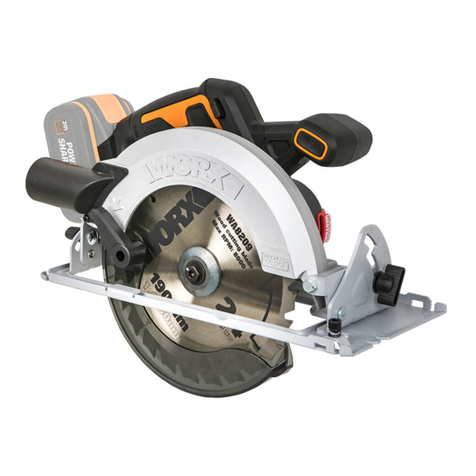
SPECIFIC SAFETY RULES
FOR CUT OFF SAWS
1. If the power cable is damaged or cut
through while working, do not touch
the cable, and pull the power plug out
immediately. Never use the machine with a
damaged cable.
2. Wear protective glasses and hearing
protection. Dust is generated while
working that can be detrimental to health,
inflammable or explosive. Suitable
protective measure are required.
3. For example: Some types of dust are
considered to be carcinogenic. Use suitable
dust vacuuming and wear a dust protection
mask.
4. Light metal dust can burn or explode.
Always keep the workplace clean since
mixed materials are especially dangerous.
5.
Wear protective gloves and sturdy shoes.
When necessary, also wear protective clothing.
6. Connect machines that are used outdoors
by means of a fault current circuit breaker
(FI) with a maximum triggering current of
30mA. Use only an extension cable that is
approved for outdoor use.
7. Always lead the cable to the rear away
from the machine.
8. Use the machine only for dry cutting.
9. Take hold of the electric tool only by the
insulated handle when the cutting tool
could come in contact with hidden wiring
or its own power cable. Contact with
voltage carrying wiring can place the metal
parts of the machine also under voltage
and lead to an electrical shock.
10.Never stand on the machine. Serious injury
could occur if the tool is tipped or if the
cutting tool is accidentally started.
11. Use cutting discs whose allowable speed is
at least as high as the no load speed of the
machine. Check the cutting disc before use.
12.Keep your body positioned to either side
of but not in line with the cutting disc. In
case of a burst disc, your body is better
protected from possible fragments.
13.The cutting disc must be flawlessly
mounted and be able to rotate freely. Make
a test run of at least one minute without
load. Do not use damaged, out of round
or vibrating cutting discs. Always correctly
adjust the depth stop. When the depth stop
is not properly adjusted, the cutting disc
can cut into the surface underneath the
base plate.
14.
During operation, the cutting disc cover must
be attached and the protective pendulum
hood must be functioning properly.
15.Do not work with magnesium or materials
containing asbestos.
16.Protect the cutting disc from impacts,
shocks and grease.
17. Apply the machine to the work piece only
when it is switched on.
18.Keep your hands away from the rotating
cutting disc.
19.When cutting metal, sparks are generated.
Take care that no persons are endangered.
Because of the danger of fire, no
combustible materials should be located in
the vicinity (spark flying zone).
20.Blocking of the cutting disc leads to a
jerking reaction of the machine. In this
case, switch off the machine immediately.
21. Do not ram the cutting disc with force
into the work piece or apply too much
pressure when using the machine. Avoid
especially the catching of the cutting disc
when working on corners, sharp edges,
etc.When the cutting disc is damaged due
to misuse, it may develop cracks that could
lead to bursting without warning.
22.Avoid overloading the motor especially
when working with large work pieces.
When cutting, apply only light pressure to
the handle.
23.Observe the dimensions of the cutting
disc.The hole diameter must fit on the tool
spindle or the adapter without play.
24.Do not apply sideways pressure to the
cutting disc.
25.Observe the instructions of the
manufacturer for the mounting and usage
of the cutting disc.
26.Actuate the spindle locking only when the
cutting disc is at a standstill.
27. The cutting disc becomes very hot while
working; never take hold of it before it has
cooled.





